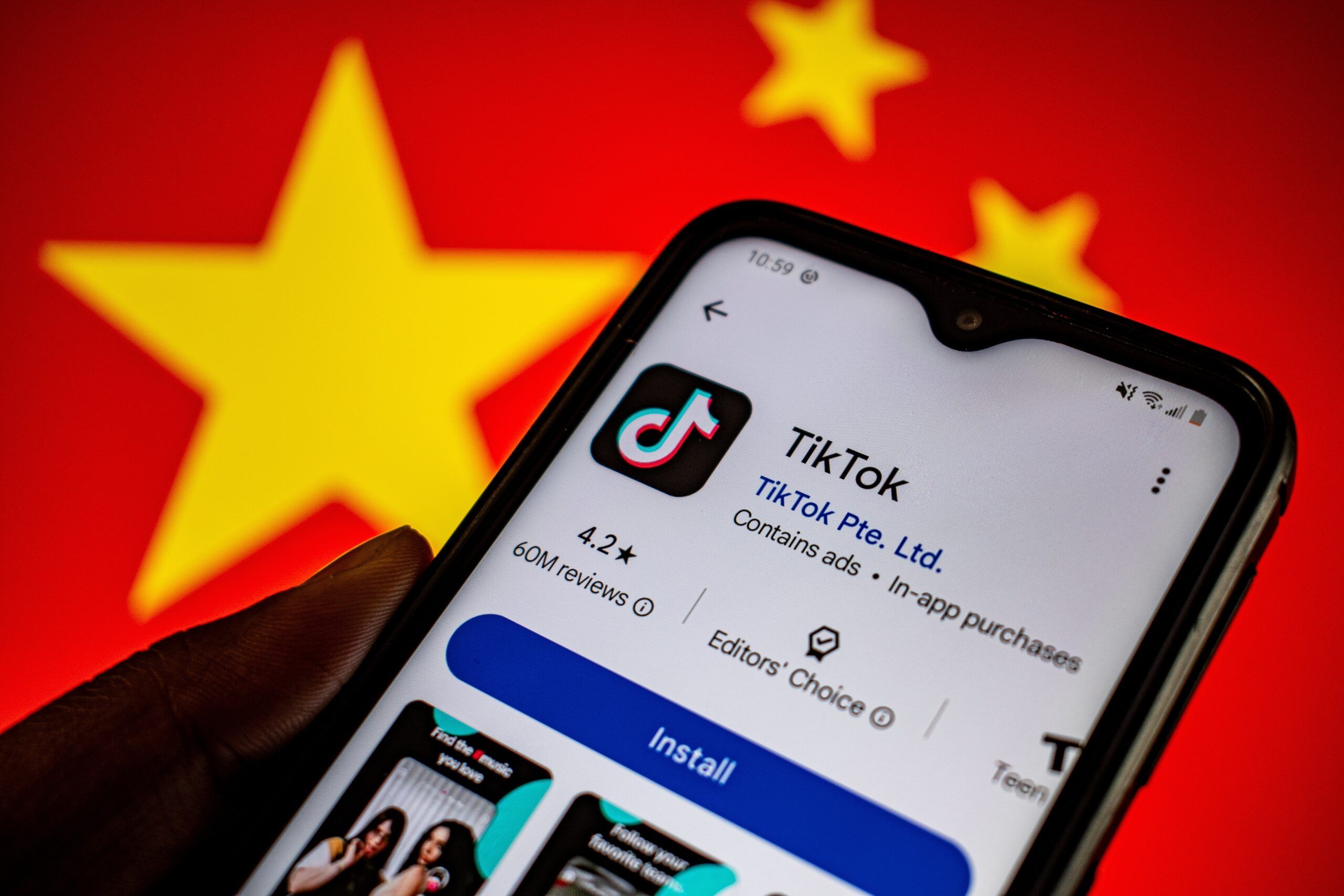Trump’s Middle East Visit: U.S. Online Diplomacy and Social Media Reaction

President Donald Trump’s May 2025 diplomatic mission to the Middle East marked one of the most closely watched foreign policy maneuvers of his current term. Combining traditional statecraft with theatrical optics and high-stakes negotiations, the visit has drawn a spectrum of reactions across political, diplomatic, and digital domains. Using open-source intelligence (OSINT), including official statements and public responses on social media platforms, a clearer picture emerges of both the intentions behind Trump’s diplomacy and the perceptions shaping its impact.
The centerpiece of Trump’s tour was Saudi Arabia, where the former and now reinstated president was welcomed with elaborate ceremony. Fighter jet escorts, a horse-mounted honor guard, and a rare purple carpet—symbolizing royal status—signaled the depth of Saudi efforts to highlight the strength of bilateral relations. Crown Prince Mohammed bin Salman personally greeted Trump at the tarmac, a breach of typical protocol that underscored the symbolism of the moment. Trump received the Collar of Abdulaziz Al Saud, the kingdom’s highest civilian honor, and praised the Saudi Crown Prince as a partner in building a new regional order.
A key outcome of the visit was a $600 billion investment agreement encompassing military, infrastructure, and technology sectors. A White House fact sheet described the deal as a foundation for a “trillion-dollar alliance,” with $142 billion allocated to U.S. defense contractors. On X (formerly Twitter), user @IvankaNews_ celebrated the signing, asking rhetorically, “Isn’t this what you voted for?” Others, including @howardlutnick, praised the Crown Prince for presenting a “modern vision” of Saudi Arabia’s future.
However, the more consequential and controversial segment of Trump’s trip was his meeting with Syria’s interim president, Ahmad al-Sharaa. This marked the first formal meeting between leaders of the U.S. and Syria in over two decades. Trump announced the immediate lifting of sanctions on Syria and advocated for the country’s inclusion in the Abraham Accords, urging Sharaa to expel foreign terrorist elements and assume responsibility for ISIS detention centers in the northeast. The White House later confirmed that Turkish President Recep Tayyip Erdoğan joined the meeting by phone, expressing support for the new diplomatic opening.
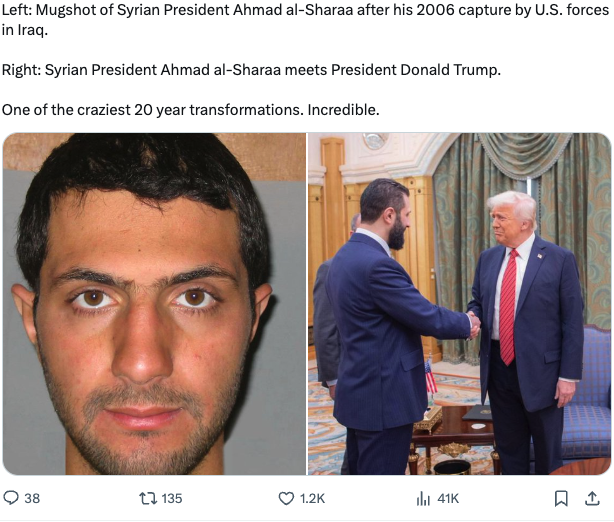
The meeting drew polarized reactions. Supporters framed it as a pragmatic step toward regional stability. @MAGAvoice called it “historic and unthinkable,” using the hashtag #PeaceThroughStrength. @MarioNawfal shared videos of celebrations in Damascus, claiming the city “erupted in celebration” following the announcement on sanctions. Users praised the Riyadh speech as “genuinely incredible,” particularly for its framing of global inequality and rejection of Western-led interventionism.
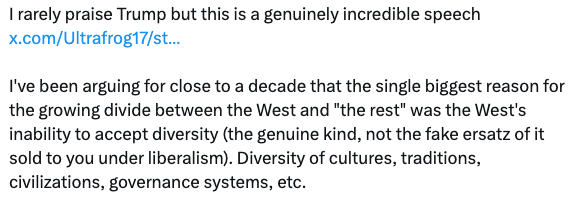
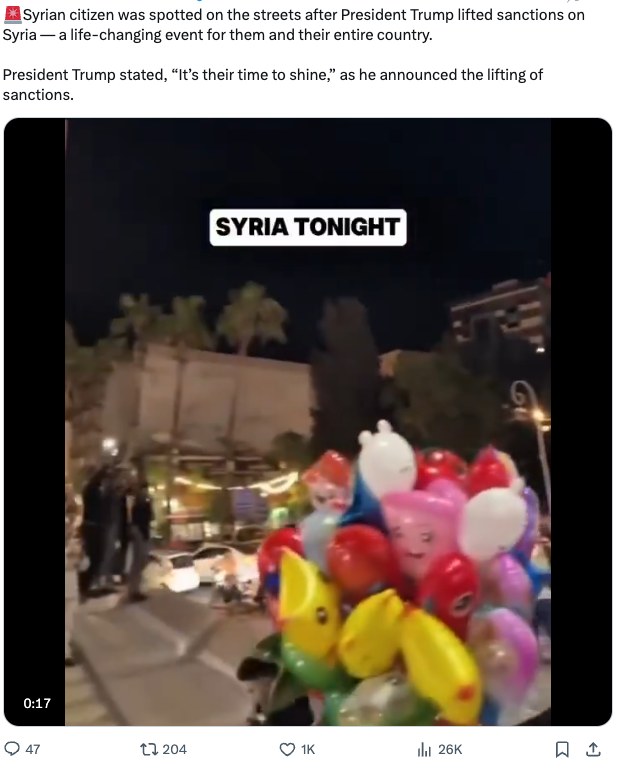
In contrast, other voices expressed skepticism. Policy analyst @Charles_Lister described the lifting of sanctions as “HUGE NEWS,” but cautioned about the precedent of legitimizing a former jihadist figure. Questions were raised about Trump’s glowing characterization of al-Sharaa, whom he described as “a real leader” and “a young, attractive guy… tough guy. Fighter.” The language, captured in White House pool reports and widely shared by @SpectatorIndex and @RagipSoylu, prompted concern among human rights observers and foreign policy experts about the tone and implications of legitimizing Syria’s new leadership so quickly.
On social media, Trump’s trip quickly became a cultural moment. Posts ranged from reverent to sarcastic. @PapiTrumpo declared, “THE WORLD IS HEALING ❤️,” while others mocked Trump for appearing to nod off during a summit session, recycling the moniker “Sleepy Trump” in reference to his previous jabs at President Biden. AI-generated content also resurfaced, including the controversial “Trump Gaza” promotional video previously shared by the former president. Critics called it tasteless, especially in light of ongoing humanitarian issues in Gaza. Others used it to emphasize Trump’s aspirational messaging about transforming conflict zones into tourist destinations, however unrealistic that may be.
The visit’s messaging appeared consistent: a pivot away from Western-led nation-building toward regional self-reliance, economic development, and bilateral partnerships. Trump argued that cities like Riyadh and Abu Dhabi stood as testaments to what the region could achieve without foreign intervention. His remarks were met with applause by GCC leaders, and widely shared by official accounts like @PressSec and @RapidResponse47, further reinforcing the administration’s narrative that America’s role should now be that of a facilitator, not a director.
Meanwhile, Trump’s omission of Israel from the itinerary raised questions. Although he called on Saudi Arabia to recognize Israel—reportedly saying it would “greatly honor him”—his lack of direct engagement with Israeli leadership drew scrutiny. Analysts noted it could reflect tension with Prime Minister Netanyahu rather than a shift in Trump’s pro-Israel posture. On X, user @VividProwess highlighted this distinction, noting, “Trump’s current split is with Netanyahu and not Israel, which he still ardently supports.”
Beyond the Middle East, Trump’s diplomatic momentum extended to other arenas. Reports indicate he played a role in brokering a temporary ceasefire between India and Pakistan, encouraged dialogue between Russia and Ukraine, and finalized a trade agreement with China in Geneva. Supporters used these developments to bolster Trump’s image as a global dealmaker, with posts like @EricLDaugh’s describing the Riyadh speech as “a VICTORY over globalism.”
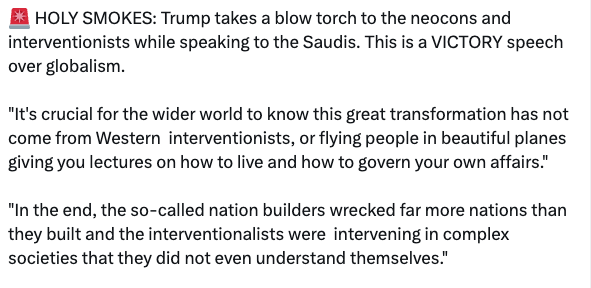
While assessments of the visit vary, the broader implications highlight the evolving nature of modern diplomacy, where strategic engagement increasingly intersects with media visibility and public perception. In today’s interconnected world, diplomatic initiatives are often accompanied by real-time reactions across digital platforms, shaping narratives well beyond official statements. The long-term impact of such visits depends not only on the agreements made but also on how they are sustained and interpreted by both domestic and international audiences.
More from the author
